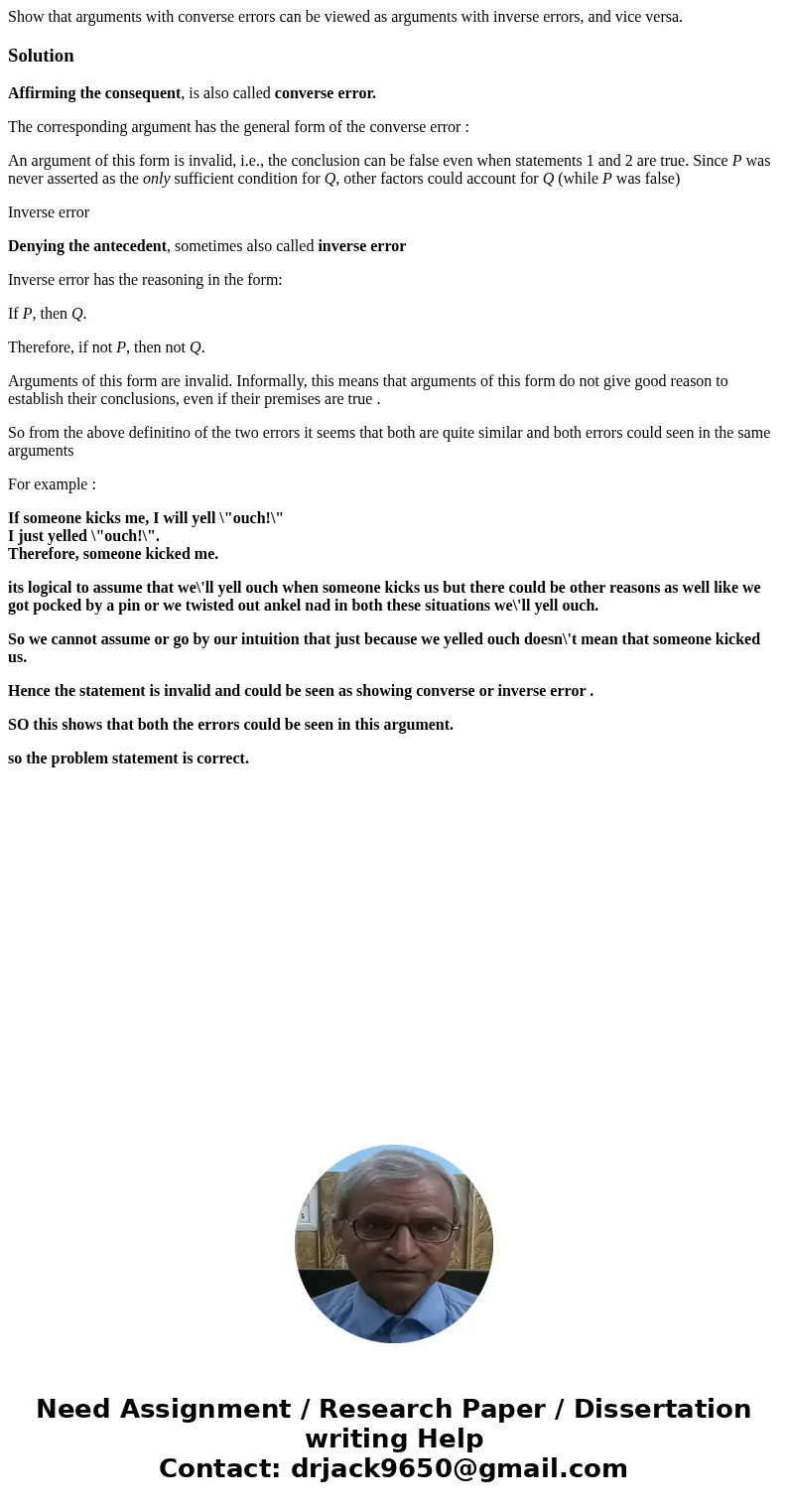Show that arguments with converse errors can be viewed as ar
Solution
Affirming the consequent, is also called converse error.
The corresponding argument has the general form of the converse error :
An argument of this form is invalid, i.e., the conclusion can be false even when statements 1 and 2 are true. Since P was never asserted as the only sufficient condition for Q, other factors could account for Q (while P was false)
Inverse error
Denying the antecedent, sometimes also called inverse error
Inverse error has the reasoning in the form:
If P, then Q.
Therefore, if not P, then not Q.
Arguments of this form are invalid. Informally, this means that arguments of this form do not give good reason to establish their conclusions, even if their premises are true .
So from the above definitino of the two errors it seems that both are quite similar and both errors could seen in the same arguments
For example :
If someone kicks me, I will yell \"ouch!\"
I just yelled \"ouch!\".
Therefore, someone kicked me.
its logical to assume that we\'ll yell ouch when someone kicks us but there could be other reasons as well like we got pocked by a pin or we twisted out ankel nad in both these situations we\'ll yell ouch.
So we cannot assume or go by our intuition that just because we yelled ouch doesn\'t mean that someone kicked us.
Hence the statement is invalid and could be seen as showing converse or inverse error .
SO this shows that both the errors could be seen in this argument.
so the problem statement is correct.

 Homework Sourse
Homework Sourse